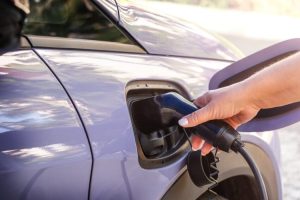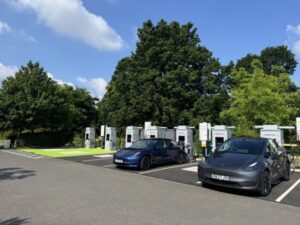Motability Operations released new research showing that 69% of UK drivers won’t walk 10 minutes to reach a public EV charger. The company, which runs the Motability Scheme, published findings that highlight growing concerns about charging infrastructure accessibility.
The EV Transition Tracker reveals stark regional differences in charging access. Outside London, the average walk to a public charger takes 11 minutes and 56 seconds.
In the capital, that drops to just three minutes and seven seconds.
Infrastructure gaps are stopping drivers from making the switch from petrol and diesel vehicles. The research suggests that charging network reliability remains a significant barrier to EV adoption across the UK.
Disabled Drivers Face Greater Challenges
Disabled customers show the least confidence in public charging networks. 37% of disabled drivers said they wouldn’t consider using public chargers at all – compared to 12% of all UK adults.
The concerns go beyond simple availability.
Disabled drivers on the Motability Scheme cited specific worries about charger locations and accessibility. 12% expressed concerns about the general lack of charge points where they live or difficulty finding nearby options.
These concerns reflect broader issues – 28% of all motorists share similar frustrations about charger availability.
Current EV drivers remain divided on infrastructure adequacy. Just over half (51%) of all EV drivers believe there are enough public chargers nationwide.
Among Motability Scheme EV drivers, only 24% agreed.
Industry Leaders Call for Change
Andrew Miller, CEO of Motability Operations, addressed the findings directly.
Too many drivers don’t trust that they’ll be able to charge easily, locally or reliably. If we’re serious about meeting the 2030 ban on petrol and diesel sales, chargepoints need to be where people live, easy to use, and designed with everyone in mind. Until this happens, we risk leaving thousands of drivers behind.
The 2030 deadline adds urgency to infrastructure development. Miller’s comments highlight the gap between policy goals and current charging network reality.
Real-world experiences support the research findings.
Vanessa S, an EV driver on the Motability Scheme, shared her perspective on public charging challenges.
While I see benefits to driving an EV, I struggle with the public network. Not only is it difficult to find chargers, as a disabled person you also have to consider whether the bays will be big enough, cables too heavy, or facilities too far away. I avoid using it.
Her experience illustrates how infrastructure design affects different user groups.
Solutions and Advocacy Efforts
Vauxhall is leading accessibility improvements through its ‘Electric Streets of Britain’ campaign. The initiative identifies areas needing on-street charging infrastructure and lobbies local councils for support.
The campaign targets residential areas where home charging isn’t possible – addressing one of the key barriers identified in the research.
The findings come as the government pushes toward electrification goals. Meeting the 2030 petrol and diesel sales ban will require addressing both infrastructure quantity and accessibility concerns highlighted in the tracker.





